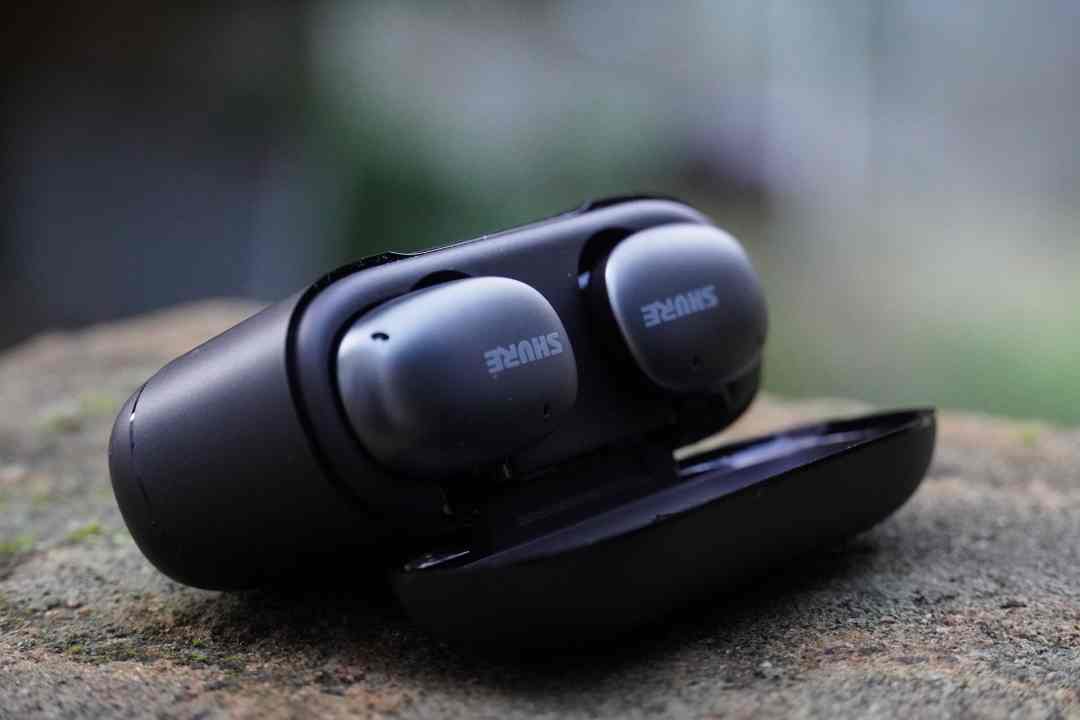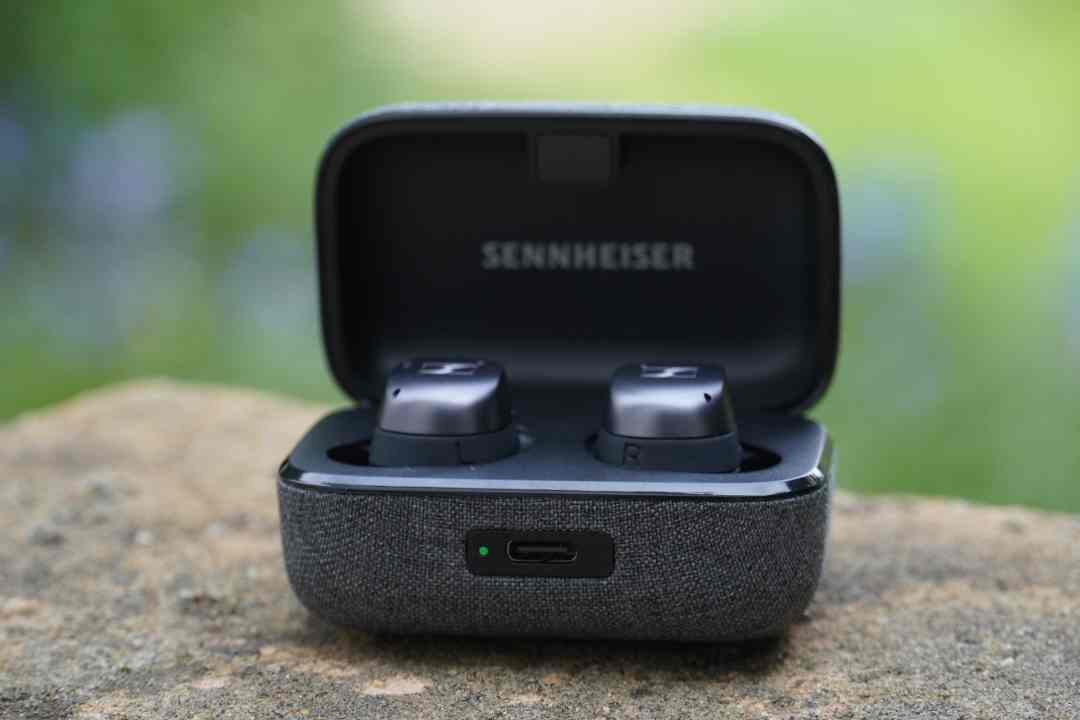
A pair of wireless earphones that aren’t the most modern in terms of their design sensibility and lack of features; but the sound the Shure AONIC Free offer is a disciplined and versatile one.
Pros
- Clear, detailed and dynamic sound
- Nice range of in-app customisation
- Very good call quality
- Physical buttons
Cons
- Average battery
- Stripped-down feature set
- Getting them to fit can be a struggle
- Prosaic looks and gigantic case
Availability
- UKRRP: £179.99
- USARRP: $199.99
- EuropeRRP: €179
- CanadaRRP: CA$229
- AustraliaRRP: AU$299
Key Features
-
Sound-isolating technologyBlocks out noise with its design
-
Environment modeHear what’s around you with two taps
Introduction
Shure isn’t a company that does things like other audio brands. There’s a sense of not wanting to compromise either its values or its search for ultimate performance with its wired products.
And that’s carried over into the company’s wireless range of headphones. Although these models rid themselves of wires, they still have that pulsating and, at times, uncompromising level of design and performance.
But this is where the AONIC Free differ. A little. They’re more traditional in appearance than the odd look of the Aonic 215, but look to maintain their high standards of performance with claims of studio-quality sound and a design that blocks external noise with the use of Comply foam ear-tips.
They’re cheaper than the AONIC 215 2nd Gen, and with the different design, they’re in line to make Shure’s true wireless options more accessible to those after high-quality true wireless performance.
Design
- Bulky appearance
- Comply foam ear-tips
- Physical touch controls
The AONIC Free look as if they could have arrived on the scene three or four years ago. These aren’t svelte or compact in size; they’re surprisingly big and chunky, not unlike the Bose QuietComfort Earbuds.
They also look cheaper than what you might envisage the £180 price gets you – the black finish of the review sample doesn’t radiate as well as the striking red finish. But they’re lightweight, opting for the ‘twist and lock’ school of fit, so once they’re in, they should stay in with little movement.
They do remove a fair amount of ambient noise, too, but I’m rather mixed on the execution for one reason: the use of Comply foam ear-tips. I don’t get on well with Comply foam, which expands in the ear to stop sounds for permeating through to your ear canal. In my ears I’ve often found that the ear-tip expands and then pushes the earbud out.
I had to jam and twist the earphones for them to stay in, which isn’t the most comfortable process; even trying different ear-tips didn’t elicit the desired results. So, while the noise isolation is effective, the process of getting there wasn’t the most comfortable.
Controls are delivered in the form of a button that sits along the top edge of each earbud. Simply tap once, twice or three times to operate, with a hold powering them down. In addition, using the ShurePlus Play app, these buttons can even be customised to add track skipping or preferred EQ mode. It’s an easy and stress-free means of operation.
The AONIC Free’s case is amusingly large. While it’s pocketable, I doubt it warrants being this big. Whatever Shure comes up with for its next true wireless, it could do with shrinking the dimensions a little.
Features
- Average battery life
- Excellent call quality
- Good awareness mode
- Nice set of in-app customisations
At 21 hours in total, the AONIC Free’s battery life isn’t the most generous, especially in light of the massive case. Seven hours per earphone is good, but two extra charges in the case feels lacklustre. With no wireless or fast charging on offer, you’re getting a pretty basic feature set.
That seems to be the theme of the AONIC Free, a set of earphones that are sparing in what they afford. While there’s nothing wrong with that approach, the likes of the Jabra Elite 7 Pro and Sony LinkBuds offer greater smart convenience at a similar price, if that’s what you need.
The Environment mode – Shure’s name for its awareness mode – offers a crisp-sounding, open performance; sharp and detailed enough to hear what’s around you with clarity. They’re good for any environment – trains, offices or walking about. There’s some noise to contend with, but nothing I’d quantify as distracting or that colours the audio. I found it only became particularly noticeable during lulls in music.
Head to the ShurePlus Play app and you’ll discover that it’s had a bit of a makeover (at least from what I remember). Text is easier to read, and there’s more of it. Levels for the Environment mode can be adjusted in the app, and there’s means of customising the button controls, prompts and tones, as well as the ability to turn on a red busy light that indicates when you’re in a call – which is handy for office use.
There are more equalizer presets to choose from (these extra presets concern treble), as well as the option to create your own if you’re more familiar with adjusting Gain levels and Bandwidth. You can add the music you have on your mobile device and play it from the app, and then there are the usual settings such as firmware and details about the Free’s performance. It’s a stable app, and despite including a few more features, it hasn’t traded simplicity for complexity.
Shure has been pushing the use of its headphones for calls and video-conferencing with beamforming microphones assisting. Call quality is very good – one the best I’ve used so far from a true wireless. The person on the other end of the line could hear my voice perfectly clearly, saying my voice wasn’t competing with background noise when walking in the Waterloo station area; while other people could be heard, they weren’t a distraction, with my voice always the focus. You can’t ask for much more than that.
Sound Quality
- Versatile performance (with the right EQ enabled)
- Lack of outright bass
- Clear, detailed, revealing mid-range
I’ve seen some rave reviews for the AONIC Free, so I’ll start this section by saying I’m not quite as enamoured, but that isn’t meant to be a negative – the AONIC Free are an engagingly neutral-sounding pair.
That neutrality is evident from the off. There’s no attempt to add colour to what you’re listening to; it’s a deliberately crisp, clear and flat sound (at least with the default EQ). However, they’re lacking for outright bass – a listen to Noisia’s Barbas Theme from the 2013 Devil May Cry game and the dub-step “whoompf” seems to have been weeded out altogether.
It’s only when I turned on the Bass Boost EQ that I got a sense of power and weight to the low frequencies. The same applies to Hudson Mohawke x Lunice’s Higher Ground, its big beats treated with more depth and extension when the EQ was activated. Bass hounds will want to play around with the EQ, but at least there’s that option.
The Bass Boost EQ reveals the Shure can make a punchy impression at the low-end, and in the mid-range they’re exceedingly clear, transparent and organised. Unlike the full-sized headphones – the AONIC 40, for example – their inflection isn’t just a dollop of zip and vigour; they’re nuanced and revealing of detail, instruments defined with all-round convincing tonality in the cover of This is America (feat. Keyon Harrold).
Vocals are handled with surety. Phoebe Bridgers’ vocals in I Know the End is full of soft intonations, the Shures deliver them gracefully. And there’s plenty of nuance, poise and dynamic variation captured in Anette Askvik’s Liberty. A switch to The Isley Brothers’ For the Love of You, Pts 1 & 2 and their soulful voices ring true, the lack of colouration giving the impression of hearing the voices as they were meant to be.
The AONIC Free are strong in terms of dynamics, capturing the variation in loudness throughout a track without missing a trick, and this is further assisted by their rhythmic skills as they flow up and down, at ease with slow and fast tracks alike, capable of swift stops or broad, rising swells. Dexterity and variation are just two of many strings to the Shure’s bow.
Those higher frequencies don’t have the reach in Raven’s GoGo Penguin, although a switch to the Treble Boost EQ relays more brightness and insight, and that says much about the Shures as anything else in this review. There are many strings to their bows, but they’re not accessible all at once. The Shures can conjure up an impressive sound, then, you just have to choose which one you want at any one moment.
Latest deals
Should you buy it?
For impressive sound and call quality Use headphones for calls as much as you do music? The AONIC Free prove capable in both worlds.
If you’re reliant on smarts There’s little to speak of in terms of smart features, the Shures are more stripped-back and basic.
Final Thoughts
True wireless earbuds have been around for five or six years now, but there’s something decidedly old-school about the Shures. From the bulky, slightly cheap appearance to the reliance on their design to block noises – from a design and features perspective, they’re stripped down and to the point.
Audio is where they peak their heads above price rivals, with a nuanced, calibrated performance as long as you’re comfortable fiddling with EQ settings to bring out their best. Call quality also convinces, making these buds worth consideration for use for online video conferences and the like.
Trusted Score
How we test
We test every headphones we review thoroughly over an extended period of time. We use industry standard tests to compare features properly. We’ll always tell you what we find. We never, ever, accept money to review a product.
Find out more about how we test in our ethics policy.
Tested over several weeks
Tested with real world use








